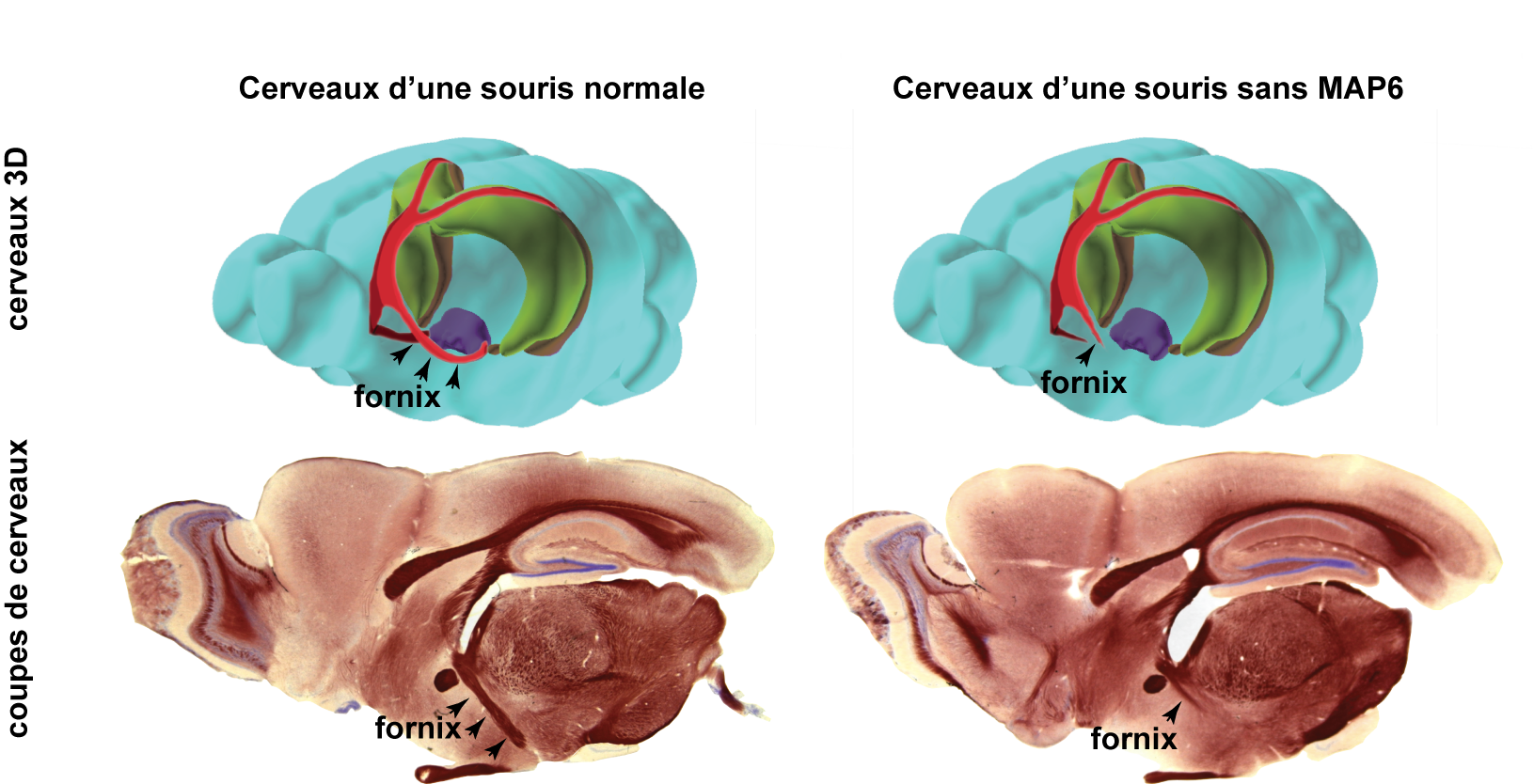The cytoskeletons of our body are made up of microtubules, which have the particularity of continually assembling and disassembling. Certain proteins are there to halt this dynamic and to stabilize the microtubules. Part of the class of MAPs (microtubule-associated protein), these proteins could soon be demoted. Indeed, work from the CEA-IRTSV and INSERM have come to contradict this assumption. Their work reveals that MAP6 (also known as STOP) has a minor role in stabilizing microtubules in neuronal cells, and yet it has a major role in a whole other dimension.
"Studies in a rodent model lacking the MAP6 protein demonstrate that this molecule has little impact on the dynamics of neuronal microtubules", explains Annie Andrieux, laboratory director at the CEA-IRTSV. "In contrast, we observed a decrease in brain volume and the alteration of higher mental functions (relational learning and memory, etc.)." This loss of volume does not correspond to a reduction in the number of neurons, but to an atrophy of the white matter, namely the axon bundles which connect the neurons from one zone to another in the brain. "Without MAP6, a number of bundles are affected", says the biologist. "In particular, the connections between the hippocampus and hypothalamus, grouped under the term "fornix", are absent." By focusing on the disappearance of the fornix, the researchers discovered that MAP6 acts on Semaphorin 3E, a guide molecule responsible for building the fiber bundles. "MAP6 is needed for Semaphorin 3E to do its job", says Annie Andrieux.
This role of MAP6, unsuspected by the scientific community until now, could have implications in psychiatry. For example, many mental and behavioral disorders are associated with a reduction in the volume of white matter. Thus, alteration of the fornix has been observed in patients with schizophrenia. "Although there are a priori a very large number of genes (and therefore proteins) at the origin of this disease, we can now imagine a treatment involving a MAP6 regulator", concludes the scientist.

Above, the fornix represented in red on the 3D diagram of the brain is an assembly of fibers connecting two brain structures important to the management of memory and emotions: the hippocampus (in green) and the posterior hypothalamus (in purple). Below, gold coloring of the neural bundles in brain sections shows that the posterior fornix connecting to the hypothalamus is truncated in mice with a disabled MAP6 gene, disconnecting these two major brain regions.